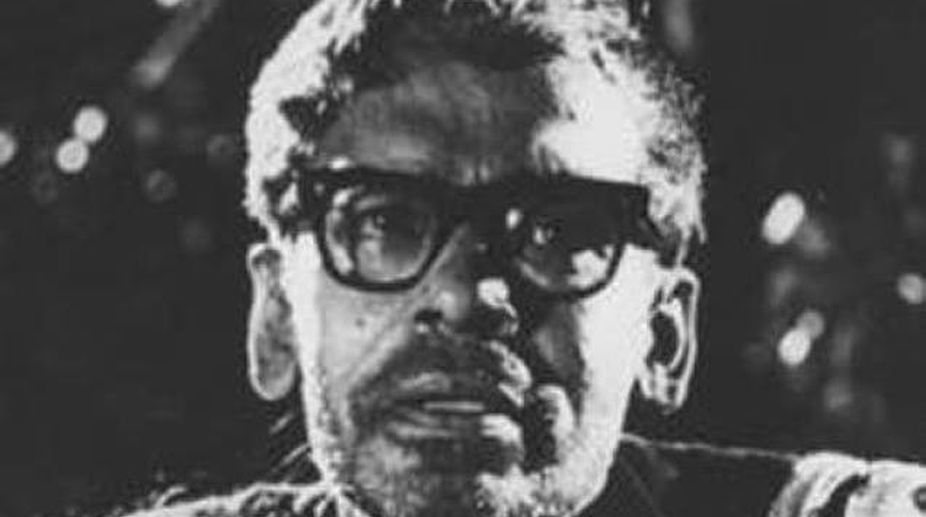If Ritwik Ghatak’s films have not suffered the same fate that they did when he was alive, it was because there was an extraordinary revival of his work after his death in 1976. One filmmaker who had worked around the same time and had similar social attitudes and artistic leanings was Rajen Tarafdar.
Both had their roots in Opar Bangla and were not reconciled to the division of a shared heritage. The sadness was reflected in their films, perhaps more stridently in Ghatak’s work than in Tarafdar’s but the similarities were unmistakable. Like Ghatak, Tarafdar made just a handful of films in a directorial career spanning three decades and the two shared a love for acting. It reinforced their artistic commitments despite the fact that commercial success seemed to elude them. It explained the long intervals between their films but it never resulted in any compromise or concession in their overall approach.
Advertisement
What makes Tarafdar a tragic figure is that he is virtually forgotten — so much so that his birth centenary in 2017 is passing unnoticed. It hasn’t resulted in any effort to return to whatever is available of his work. He directed just seven films beginning with Antariksha in 1957 and it is anyone’s guess how many of these have been preserved. Ganga, made in 1960, tasted some success apart from Jiban Kahini, made in 1964. But both films may well be languishing in some laboratory, desperately in need of restoration. It is unfortunate that, even with a treasure house of films made in Bengal after the arrival of the talkies, preservation methods are as hopelessly inadequate as the interest in keeping alive the cinematic heritage. This has left a filmmaker like Rajen Tarafdar out of the reckoning during major events like conferences and film festivals.
Yet there can hardly be any reservations about the honest explorer of social realities with a narrative style of his own. Nagpash, his last film made in 1987 shortly before he died, had a rambling structure based on life steeped in poverty and superstition in the Sunderbans. It had echoes of Ganga which dealt with the lives of fishermen and again found the director grappling with the despair that is an inescapable fact of life in the riverine areas of rural Bengal. Tarafdar had never attempted to give these films a glossy look and whatever romantic interest these plots had contained also preserved the harsh tones that made the films honest and credible. It was a different matter that they never got the exposure that other mainstream films claimed. The parallel stream had not arrived and the backdrop was so specific that the films could never look beyond the state for larger audiences. Whether it was the feudal society in Antariksha or the human drama in Jiban Kahini, there was never an attempt to look at issues in a wider social context. If the films were modest in their conception and treatment, the modesty was reflected in the personality of the director himself.
However, all this didn’t take anything away from the meticulousness with which Tarafdar mounted his films. His producers may have been seriously concerned about the enormous footage that he was inclined to expose. It needed extensive work on the editing table. But Tarafdar belonged to the class that was more concerned about artistic details than about working on severely restricted budgets. That is perhaps one reason why, like Ghatak, he was never a favourite with producers —more so after Akash Chhoan and Antariksha never left any impression on audiences unlike Ganga that claimed moderate success in both commercial and critical terms. Whatever little is seen of his work today reveals the artistic sensibilities that found the director jotting down details of his shots (from different perspectives) in his sketch book. It was the mark of a director who could never be torn out of the uncompromising world that he had created for himself.
This was partly confirmed by the absence of established stars in any of his films. There was, of course, a wide choice of supporting actors whom he used effectively — Chhabi Biswas in Antariksha; Anup Kumar and Bikash Roy in Jiban Kahini; Jnanesh Mukherjee, Ruma Guha Thakurta and Niranjan Roy in Ganga and Nagpash; Bhanu Banerjee, Jahar Roy and Pahari Sanyal in Agnisikha. The name that stands out in his films is Sandhya Roy whom he introduced in Ganga and subsequently cast in virtually all his films. It also led to a connection with Tarun Majumdar for whom Tarafdar wrote the script of Sansar Seemantey and Ganadevata. But what came as a bigger surprise were the natural skills that he displayed as an actor in Sekhar Chatterjee’sBasundhara, Shyam Benegal’sArohanand Mrinal Sen’s Akaler Sandhane and Khandhar. The acting skills seemed to compensate for the long periods that he was out of work.
It may be too much to expect a revival of the sort that had kept Ritwik Ghatak alive in the consciousness of film lovers. But one could reasonably expect an effort to restore at least a few of the films that he directed. They were unfailingly rooted to the soil and rose well above convention. The centenary is a good occasion to recognise the artistic integrity that had put him in a different class.











